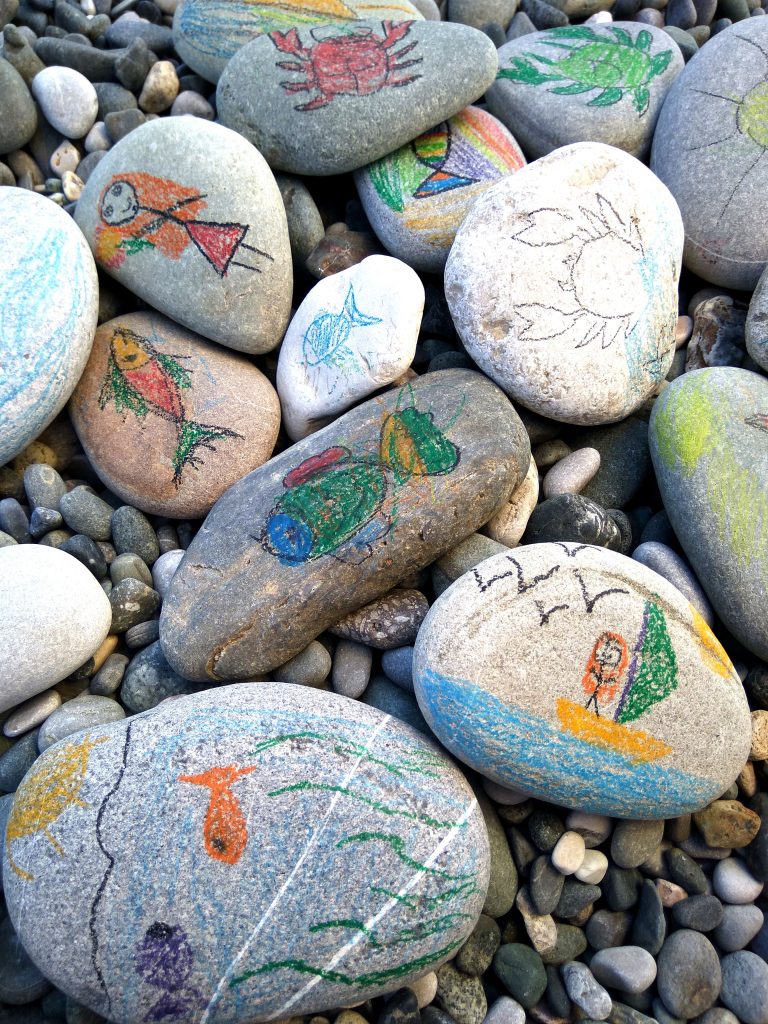
By now, if you’ve been following my blog, you’ve seen the icon of a mountain silhouette filled with pebbles. Perhaps you’ve been wondering, “what does that have to do with project based learning?” or “Why a mountain?” Maybe you’ve barely paid attention to it or perhaps this is your first stop to my page. If it’s the latter, welcome! I hope you find something to encourage and inspire you here!
For those of you who HAVE been wondering, the answer actually lies in an analogy! Pretty apropos considering analogy plays a strong role in project based learning activities! But, I’ll talk about that more in a future post.
In regards to the icon, Imagine a child picks up a small rock, a pebble, every time they go outside. The child carefully places this rock in a special place. Pretty soon a small pile forms and the child starts looking for just the right rock to add to their growing collection. People start giving the child rocks as gifts and helping the child find rocks to add to the pile. Building the pile has become intentional and relational, and as the child gets older and stronger, they start to add larger rocks, so the pile grows faster. It’s not hard to imagine, if this pattern were to continue for the child’s lifetime, the pile would eventually become a hill. This child then shares the joy of finding and adding rocks to the pile with their own children, and THEY begin regularly adding rocks. Assuming the pattern continues, you would eventually, theoretically, have a mountain of pebbles!
Learning, especially for young children, is a lot like those little pebbles. Each experience a small child has teaches them something. That little “pebble” is added to their knowledge base. Every new experience after that either adds new knowledge or builds on the knowledge they already have. Together, over time, the knowledge builds into a mountain of known facts, concepts, understandings, etc. This is sometimes called a “network of knowledge” or a “Skills toolbox”, among other analogies. The overall concept, however, is the same. People collect, build, and amass a significant amount of knowledge in their lives, and the overwhelming majority of it is through experience!

Photo by Ekaterina Novitskaya on Unsplash
For anyone who has ever watched a baby grow up, you’ll remember how significant and exciting it is when the baby learns the smallest things. The first time they focus on a face. The first time they blow bubbles. The first time they intentionally reach out and grab a toy. The first time they sit up, stand, run, talk…the amount of knowledge a baby learns in the first few years is astounding, and a lot of it is things that we mostly take for granted. Learning is a natural progression of engaging in their environment, and it develops without the baby really being aware that it’s happening.
That is the same kind of experience you can get from project based learning activities, projects, tasks, experiences, etc. The learning, in the best PBL experiences, happens almost without realizing it. It might feel TOO EASY to some of the students, because they are accessing prior knowledge and it’s happening seamlessly. This is not by accident. This is the science of transfer, and anyone creating a project based learning opportunity is going to intentionally try to design it to trigger the students prior knowledge in this way. This is why I stress creating cross-curricular activities, using “real world” examples from everyday activities like cooking and getting dressed, to pop culture references and community experiences. The closer the activity is tied to something that is familiar to the students already, the easier and more seamlessly the learning will occur.
It doesn’t have to be a big task to get significant results. It could just be a pebble. But over time, the more you do, the more those pebbles add up to build a mountain!


